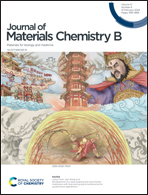Pre-formulation of an additive combination of two antimicrobial agents, clofazimine and nisin A, to boost antimicrobial activity†
Abstract
According to the World Health Organization, antimicrobial resistance is one of the top ten issues that pose a major threat to humanity. The lack of investment by the pharmaceutical industry has meant fewer novel antimicrobial agents are in development, exacerbating the problem. Emerging drug design strategies are exploring the repurposing of existing drugs and the utilization of novel drug candidates, like antimicrobial peptides, to combat drug resistance. This proactive approach is crucial in fighting global health threats. In this study, an additive combination of a repurposed anti-leprosy drug, clofazimine, and an antimicrobial peptide, nisin A, are preformulated using liquid antisolvent precipitation to generate a stable amorphous, ionized nanoparticle system to boost antimicrobial activity. The nanotechnology aims to improve the physicochemical properties of the inherently poorly water-soluble clofazimine molecules while also harnessing the previously unreported additive effect of clofazimine and nisin A. The approach transformed clofazimine into a more water-soluble salt, yielding amorphous nanoparticles stabilized by the antimicrobial peptide; and combined the two drugs into a more soluble and more active formulation. Blending pre-formulation strategies like amorphization, salt formation, and nanosizing to improve the inherent low aqueous solubility of drugs can open many new possibilities for the design of new antimicrobial agents. This fusion of pre-formulation technologies in combination with the multi-hurdle approach of selecting drugs with different effects on microbes could be key in the design platform of new antibiotics in the fight against antimicrobial resistance.



 Please wait while we load your content...
Please wait while we load your content...